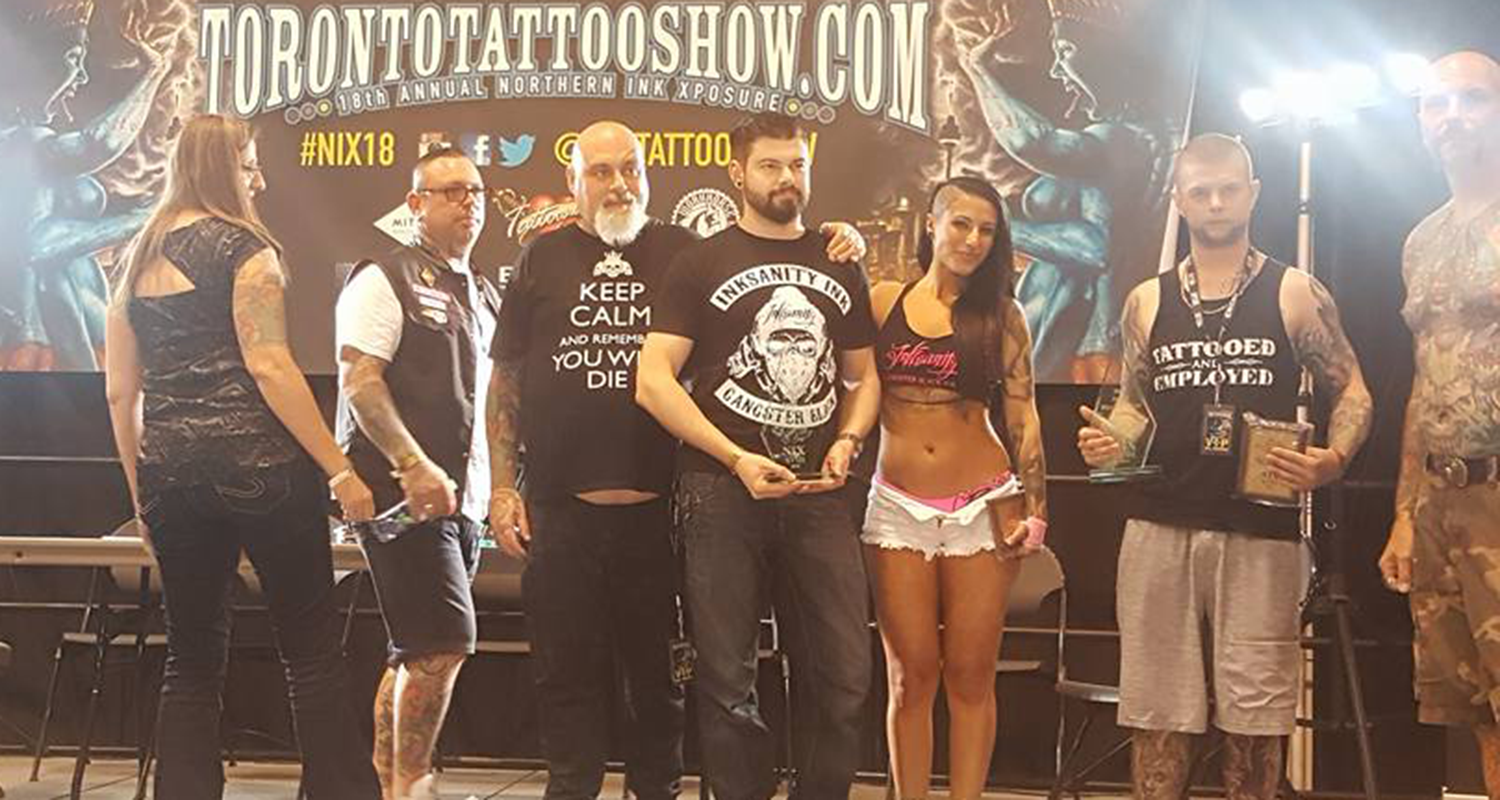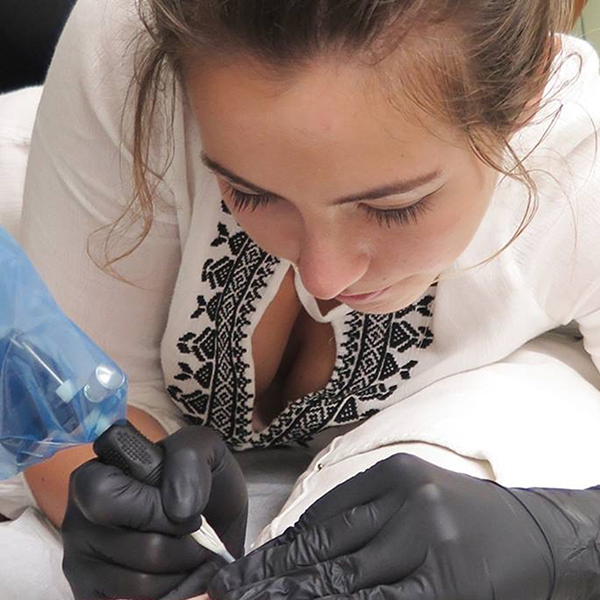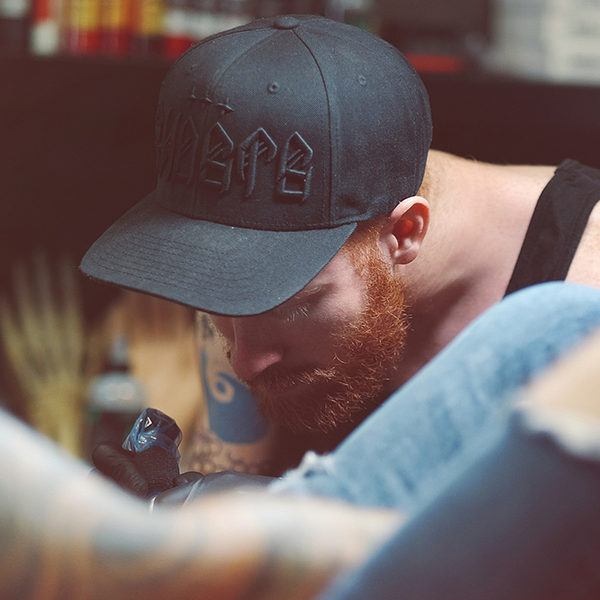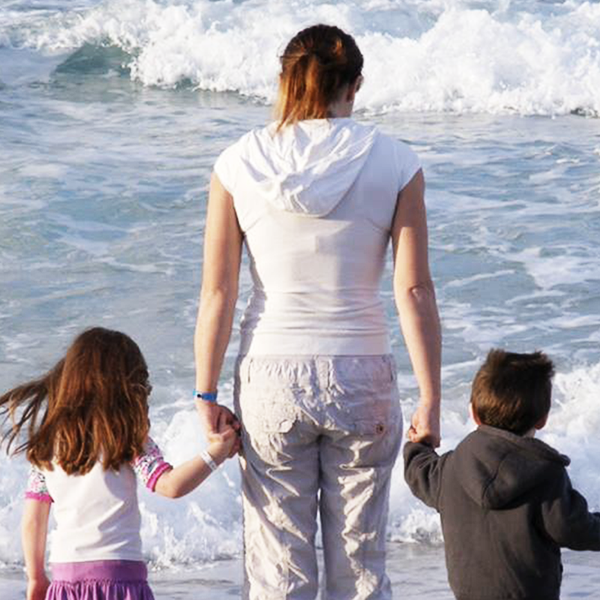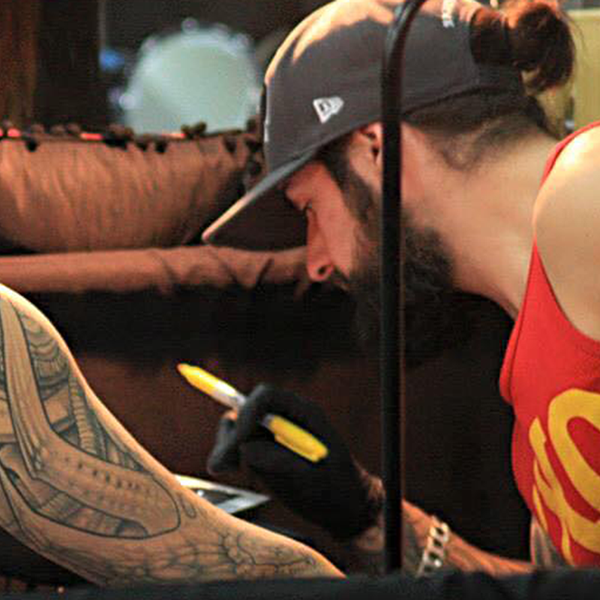Trinity: What first got you interested in tattoos? Do you remember the first tattoo you ever saw and the reaction you had to it?
Damian: I joined the Canadian Navy when I was 17 and tattooing was a Naval tradition and I wanted to get one so I got a wolf’s head on my shoulder because I was part of the Wolf Packs – the people who hunted Russian Nuclear Subs during the Cold War.
T: Tell us a bit about the history of tattoos.com, when did you start it? What was the inspiration behind it?
D: It got started in September 1995. I knew some local Toronto tattoo artists and we started making websites for their studios and Tattoos.com just seemed like a good name for a website that hosted work by professional tattoo artists.
T: What kind of impact did you hope to have on the community with tattoos.com, both on artists and collectors? Do you think you’ve achieved that goal?
D: In the mid-90s there wasn’t a lot on the internet about tattooing yet, there was not a lot on the internet about anything. My ex, who was an aspiring young tattooist, and I had been going to conventions in the states for a couple of years and we had a bunch of photos of work by different artists from the US and Canada. We would manually scan them on a flatbed scanner to post them to the internet. So it was tedious and a lot of work but all of a sudden people were enjoying it on Tattoos.com and conventions started inviting us to join them and publish photos from the shows on the internet. Guys like Paul Booth and Guy Aitchison were doing large, bold, custom work, creating what were essentially new genres for tattoo art right in front of our eyes. This was inspiring to artists and collectors and we realized that what was then the ‘world wide web’ held a lot of potential to share what was essentially for tattoo aficionados a true tattoo renaissance. So to communicate that with the world, I guess naturally evolved into a goal and the renaissance continues to this day.
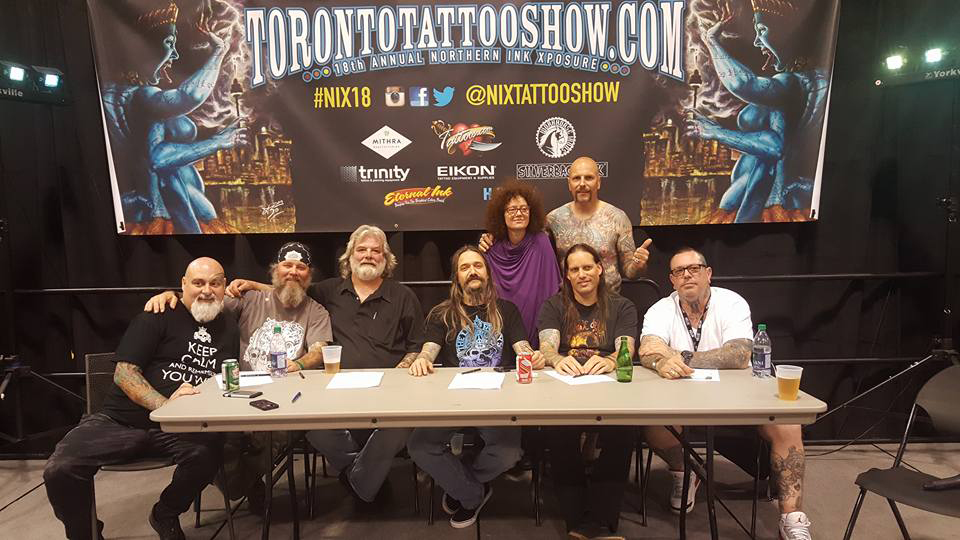
T: What inspired the founding of the NIX convention?
D: Attending international conventions in the States, Amsterdam and other places has inspired me a lot. Dan Allaston of New Moon Tattoo had produced international shows in Montreal in 1993 and 1994 and as I started hosting websites for him and artists like Jaime Izumi of Tora Tattoo and got to know more Canadian and internationally renowned artists, it seemed that creating an international show in Canada was a natural progression. So with absolutely no knowledge of how to do that, I jumped in head-first and the rest, as they say, is history.
T: What was it like putting together the first-ever NIX convention? Did you encounter any unexpected roadblocks? And what’s the biggest lesson you took away from it?
D: It was great. Even though we didn’t know what we were doing, all kinds of famous artists from around the world showed up and had a good time. It didn’t really make any money, but the artists all had fun and got to know each other, and some are still attending the show, 18 years later. So a close-knit group of artists from Canada and around the world just started to grow over the years.
T: Every year, when planning starts for NIX, how do you choose the artists that will participate?
D: A lot of artists have been coming for a long time and we get to know them, so some have become friends and just participate as often as they can. There is a large group of tattooists we can invite, and when new artists apply we always look at their portfolios to make sure they are serious.
T: Who are some of the favorite guests you’ve had to date? And who are some artists you hope to welcome in the future that you haven’t had a chance to yet?
D: Some of the artists that have been there from the start have become what I consider close friends that I ended up traveling to other places in the world with, for other conventions as well as accompanying me to other shows I have produced. Kurt Wiscombe from Winnipeg, who tattooed my whole right sleeve, has hung out with me at the Montreal show and traveled with me to Beijing. Dan Allaston, from Ottawa, has accompanied me to the Beijing show as well as the shows in Ottawa and even Cape Town, South Africa. Paul Booth came to my very first show and we’ve done shows together in China, Taiwan, South Africa, Australia and even visited Rio de Janeiro together. This past year we finally got Filip and Titine Leu as well as TinTin from Paris to visit the Toronto show and help us out with Art Fusion at the Royal Ontario Museum, so professionally that was a real feather in my cap. So many great artists are coming out of Eastern Europe and former Soviet Bloc countries, guys like Robert Zyla, who wanted to come this year but who couldn’t make it because of a scheduling conflict, he does absolutely amazing work and I hope he makes it next year. I got to hang with Victor Chill from Mexico in Barcelona last year and he said he would like to come to Toronto if it fits his schedule. If I named all the talented artists who would be a good fit with this show the answer would go on forever.
T: When artists and collectors visit NIX, what do you hope they take away from the experience? What sets NIX apart from other conventions?
D: A lot of the great feedback I get about the show is how it doesn’t have any attitude. Everybody enjoys themselves and the interaction with the collectors and fans. With it located in the heart of a multicultural city like Toronto, and having it at the beginning of the summer creates an atmosphere for the artists and fans to see and do a lot that time of year. Music festivals, markets, shopping and endless restaurants from so many different backgrounds makes many of the artists come in early or stay late and make a week of it. Toronto has so many great artists that are welcoming and open up their shop to foreign artists to guest spot, I’ve seen many long term friendships and relationships created between local artists and those from outside the city.
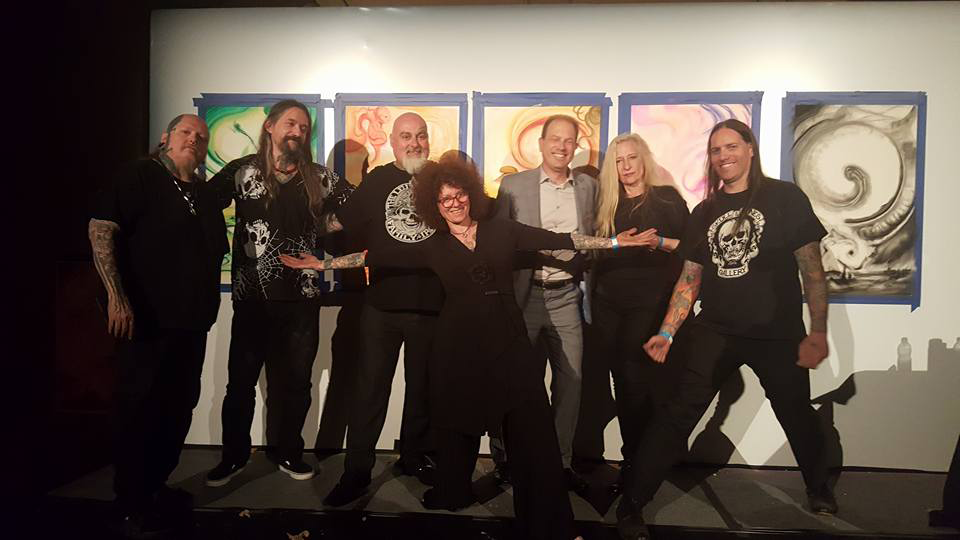
T: What makes a great tattooer in your opinion?
D: All of the best artists I know are passionate about the art. They’re not lazy; there is no secret handshake to get you in the inner circle. People who work hard and never stop learning are in my opinion the best artists. They eat, sleep and breathe art and tattoos, and have a heartfelt desire to improve their tattooing and their artwork. Over the years I’ve noticed that these artists naturally gravitate towards each other.
T: Some artists prefer to work exclusively from their shop vs. attending conventions, why do you think that is? Why are conventions important to the community?
D: I totally understand why an artist wants to work in their shop instead of at a convention; a mechanic would rather work in his garage than at the side of the road. Most often tattoo artists barely break even at these shows; many times they lose money. The reason they attend is the exchange of information and comradery they get from spending time with their contemporaries. It is difficult to work at a show, then go out to dinner and stay out late with friends then wake up early to repeat; it gets damn tiring. But at a show, oftentimes it creates great memories. I’ve gone diving with great white sharks off the Coast of Africa with tattoo artists, climbed the Great Wall of China, attended barbecues with dozens of artists overlooking the ocean in Southern Australia and drank with Bob Tyrrell pretty much everywhere on Earth except Antarctica.
T: What is Toronto’s tattoo scene like? How does it compare or contrast to the rest of Canada and beyond?
D: Toronto has quite a vibrant tattoo scene. There is the usual soap opera of this artist doesn’t like this artist or that artists dated the ex-girlfriend of this artist, just like anywhere else because the tattoo community is a community... that being said last Saturday I attended a charity auction organized by Seven Crowns Tattoo where original pieces of artwork by tattooists from around the Greater Toronto Area contributed their time to auction off artwork and raise $11000 in support of Art in the City, a privately funded after school charity program that teaches kids art in a disadvantaged neighbourhood for parents who can’t afford private daycare. Seeing the tattoo community come together to support these types of programs speaks volumes about what actual issues are important to them. The tattoo scene since I’ve been around it over the last twenty plus years has grown in a positive manner and at a feverish pace and I’m sure it will continue as the old negative stereotypes about tattooing seem to be dissipating more and more all the time. As for outside of Canada, in the last few years, tattooing is starting to catch up popularity-wise in places like China compared to the Western world.

